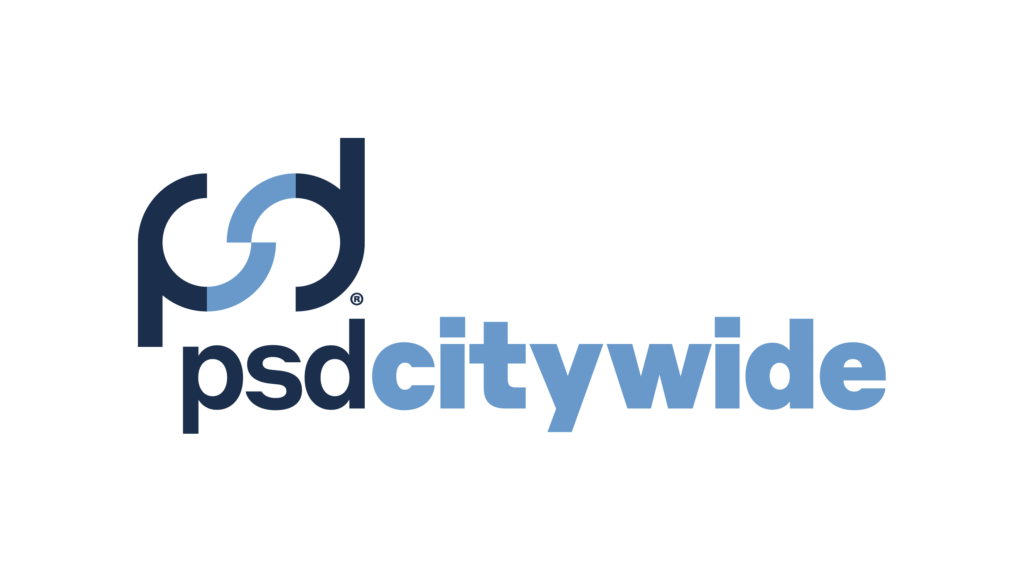Municipal revenue generation methods have remained relatively consistent since before the confederation in 1867. The primary method of tax generation being property tax. Some form of property tax has existed in Canada since at least 1793 when a poll tax was implemented against all adult males based on the assessment value of their property with a specific focus on cattle and sheep. At the time, the primary service provided by the government was the maintenance and construction of roads and the distribution of water. Since then, the service delivery requirements of local governments have exponentially increased and cover “hard” services (e.g. roads, water, stormwater, etc.) and “soft” services (e.g. libraries, parks, cultural facilities, etc.).
With the increase in required service offerings, there is slightly more dynamic selection of revenue sources for local governments. Table 1 details the percentage distribution of municipal revenue sources by province. Within the table, it becomes clear that property tax is the primary method of revenue generation for municipalities across Canada making up on average 47.64 percent of all local government revenues. However, there are some differences across the provinces. For example, in British Columbia, 33 percent of local government revenue comes from user fees. This is likely due to the finance requirements of regional districts, whereby each service offered by the regional district must be financed generally independent of any other service. In other words, a surplus in revenue for one service cannot be applied to a deficit of another.
Table 1. Distribution of Municipal Revenue Sources by Province (2016).
Source: Slack, N. E., Lisa Philipps, Lindsay M. Tedds, and Heather L. Evans. Funding the Canadian City. Toronto: Canadian Tax Foundation, 2019. Pg. 25.
Similarly, Saskatchewan local governments saw an above average revenue reliance on user fees. This is likely due to the quantity of Saskatchewan rural municipalities (296) with an average population of 590 per municipality – this translates into a higher reliance on user fees to pay for services as the revenue generation associated with property tax is likely insufficient to cover the associated expenditures.
Additionally, when looking at government transfers (grants) – and assuming that these revenue distributions have remained relatively consistent; Ontario, Alberta, Newfoundland and PEI stand out as above average. Figure 1 illustrates how in the case of Alberta the higher percentage is likely the result of being the province with the most dollars awarded from federal transfers. Figure 1 also provides context to the PEI figures as the federal transfers alone make up 10 percent of total municipal revenue, regardless of being almost seven times smaller than the amount allocated to Alberta.
Figure 1. 2018 Total federal transfers to municipalities by province/territory (in millions)
Source: Treasury Board Secretariat – Ref Table: 432527ab-7aac-45b5-81d6-7597107a7013
With all that said, there is a consistent desire and pressure on municipalities to look for new and innovative ways to increase the revenue available to fund the ever-expanding slate of service offerings. A recent collection of works by the Canadian Tax Foundation in partnership with the Institute on Municipal Finance & Governance identifies some emerging trends in municipal taxation strategies in Canada. The book “Funding the Canadian City” provides seven different papers that were presented at the Municipal Tax Symposium in early 2018. The details of which attempt to tackle concepts like the role of property tax, revenue generation strategies in the sharing economy, foreign-buyer taxes, vacancy taxes, and more.
The following is a brief description of three of the suggested or analyzed tax strategies contained within the book.
VACANCY OR EMPTY HOMES TAX
Housing unaffordability is becoming an increasingly large problem within the major metropolitan areas in Canada. When observing the metric of average home price to median family income ratios in select cities in Canada from 2001 to 2016 as displayed in Figure 2, there appears to be a significant trend towards increased unaffordability. For context, a ratio of 5 or more is considered to be extremely unaffordable.
Josh Gordon, Assistant Professor at Simon Fraser University, suggests that much of the cause of the increased unaffordability is due to a significant increase in speculative housing investment, as well as a dramatic increase in foreign capital investment in housing. Adding to the mix is the fact that in many cases these properties are purchased and left vacant for the sole purpose of using the property as a “safety deposit box” or temporary accommodations.
As an example, the high-end Coal Harbour area of Vancouver saw a vacancy rate of 23 percent within a 2013 occupancy study. To combat this phenomenon, many cities have discussed the implementation of a vacancy tax to “encourage the return of units that are being left empty to the market for purchase or rental.” In 2016 the City of Vancouver implemented such a tax called the Empty Homes Tax (EMT).
Figure 2. Average House Price to Median Family-Income Ratios, Select Canadian Cities, 2001-2016
Source: Slack, N. E., Lisa Philipps, Lindsay M. Tedds, and Heather L. Evans. Funding the Canadian City. Toronto: Canadian Tax Foundation, 2019. Pg. 160.
The tax was premised on a “declaration and audit” system, whereby homeowners were asked to declare whether a property is vacant, or unused, for more than six months in a year. Such properties would be subjected to an additional 1 percent tax of assessed value. Validation of occupancy would be based on an audit of homeowner’s tax returns, drivers’ licences, and insurance documentation. The initial outcome of the tax was able to generate approximately $30 million dollars in revenue within the first year of implementation on an assessment of 8500 vacant units, of which 5000 were deemed exempt.
The tax has been since modified in 2018 and rolled out across British Columbia for all major urban areas. The tax rate was reduced to 0.5 percent of assessed value for second homes of BC residents and increased to 2 percent of assessed value for foreign and satellite families. The change has also made exemptions less easy to obtain making it easier for administering the tax.
RIDE-SHARING TAX
Many sharing economy businesses are designed under the premise of “spontaneous deregulation” whereby the business activities intentionally ignore and encourage the skirting of laws and regulations that are placed on similar businesses that are outside the sharing economy. For example, a taxi company would be subjected to certain regulations, registration requirements, and fees that may not be captured when the driver of a ride-share app enters the market as an available substitute. While some communities have prevented ride-share apps from conducting business in their jurisdiction, these decisions have been received as relatively poor political ones. Instead, taxation models have started to see adoption across North America to account for and capture some of the revenue lost due to the unregulated activities.
In 2017, the City of Chicago adopted a US$0.15 per ride surcharge on every ride-share transaction in the city. The burden of the tax would then be split between the rider and the driver and better account for the increased usage of infrastructure within the city from the increased supply of cars on the road that would have not normally been accounted for under other means of taxation. Chicago expects cashflow from this surcharge to be enough to finance US$179 million in transit upgrades and repairs, and the funds would be specifically allocated to the Chicago Transit Authority.
In Canada, jurisdictions have been slower to implement a similar surcharge model. Calgary and Edmonton are two cities that have been early adopters in capitalizing on this revenue source. However, in the case of Calgary, the initial fee structure was poorly designed and created large barriers to entry for drivers. Instead of a per-ride surcharge, their initial strategy was to charge an up-front fee of $220 per driver, paid by the driver.
In addition to a series of check fees, inspection fees, and other mandated costs, new drivers would be subjected to an initial start up cost between $400 and $600. These costs prevented many would-be drivers from trying out the service or working part time. Calgary has since updated its fee-structure by reducing the upfront fee to $15, adding a $0.20 per ride charge, and a scaled fee for the platform itself up to $20,000 to account for some of the lost revenue from individual drivers.
The impact of these fees in Canadian jurisdictions is still too early to determine, however, as more cities in Canada allow for ride-sharing activities to take place, the more opportunity they would have to collect some of this revenue.
LINEAR-PROPERTY LEVIES
“Linear-property is property that crosses municipal boundaries and includes, for example, pipelines, wells, electric power systems, telecommunications systems, and cable distribution.” Such property poses multiple challenges to local governments. One major challenge in the case of pipelines or well developments is the risk of environmental contamination. Currently there does not exist a linear-property taxation system that accounts for the liability that local governments are faced with related to such property. Additionally, local governments with linear-property within their jurisdiction “face costs related to appropriate emergency-response
systems, teams, training, equipment, and cleanup, all of which tend to be highly specialized according to the particular form of linear property involved.”
Lindsay Tedds, Associate Professor, at the University of Calgary, suggests two potential solutions to account for this liability that municipalities are faced with and more effectively charge for these associated costs. First, a local right-of-way access fee, which is commonly classified as a regulatory charge. Through this method, local governments could recoup some or all of their costs, “including those related to permits, coordination, inspections, administration,
repair, and damage.”
Second, is a franchise or access agreement. Unlike a rights-of-way access charge which can be a ‘one size fits all’ approach, the franchise agreement would allow the local government to “negotiate individual agreements with each linear-property owner that wants access to the municipal rights of way.” Such an agreement would set the charge and conditions for the use of public land and allow the local government to shift most or all of the costs onto the consumer. The extent to which a linear-property levy would be successful in generating revenue remains to be seen, as no levies of a similar type exist currently.
CONCLUSION
While the three mentioned methods of revenue generation may be needed or helpful to support the ever-expanding service delivery requirements of local governments in Canada; an important potential outcome should be remembered. Taxes can do different things; they can raise revenue, but they can also be used to change behaviour. In the case of the EMT, researchers suggest that the tax should be implemented for the purpose of changing behaviours, while understanding that the revenue generated can be used to help address targeted expenses such as affordable housing development or infrastructure maintenance.
The EMT revenue should not be used to cover the annual operating costs of the local government, as the revenue source is unpredictable from year to year and can result in significant variation in revenues. This is even more important to keep in mind as many local governments in Canada cannot operate at a deficit and using these revenues for operating expenses can lead to required cuts to expenditures if there are substantial changes in the revenue amounts. The general consensus from the research is to utilize these taxation methods to help alleviate the burden of expenses on local government instead of using the funds to expand service delivery options.
WILLIAM KLUSKA, MPP is a Research Analyst for PSD. He holds a honours bachelor’s degree in Economics from Acadia University and a master’s degree in Public Policy, focusing on economic policy, from the University of Calgary. In his current role, William produces regular case studies, applied research projects, and assists with client projects related to municipal budgeting and finance. His most recent projects include being a co-developer of the GFOABC Budgeting Best Practices for BC Local Government Manual, and the lead analyst for the 2019 Geospatial Maturity Index under the PSD Benchmarking initiative.



